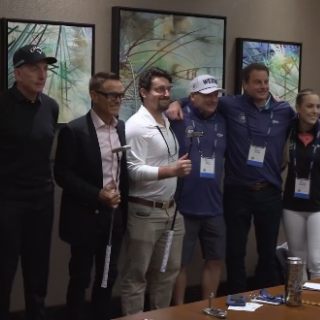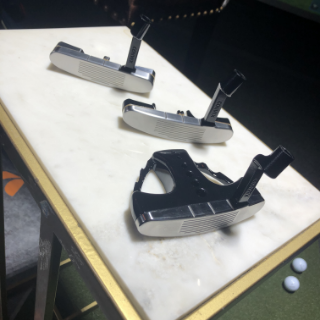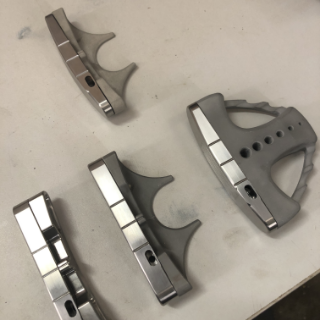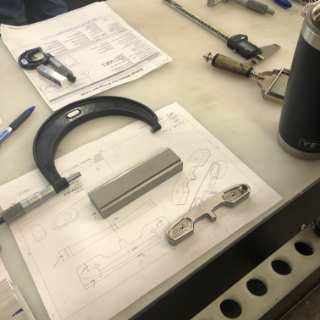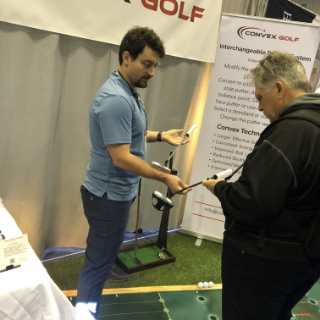1900 - Arthur Knight
At the turn of the twentieth century, Arthur Knight, the top player at Mohawk Golf Club in Schenectady, NY, identified that his putting was rather inconsistent, not because of his stroke or green reading, but that his putter design was simply inadequate. Technology within the sport was
primitive and almost all the putters available at the time were bladed, heel-shafted designs. The General Electric engineer decided he would take things into his own hands and create a superior, more consistent putter design. He spent the summer of 1902 off the golf course and instead in the workshop constructing a center-shafted mallet putter with a crosshatched face, made from wood and lead.
The early 1900s marked a golden era of experimentation in putter design. Clubmakers began departing from traditional blade styles in favor of new materials and bold innovations. One standout was the Slazenger Mallet, which featured negative loft—a forward-leaning face designed to reduce backspin and promote a true roll on slower, grainy greens. Around the same time, the Crosshead putter emerged with a distinctive "T-shaped" alignment aid, offering golfers one of the earliest visual cues for squaring the face. In 1904, William Mills revolutionized clubmaking by introducing the Standard Mallet, cast from aluminum—a forward-thinking move that influenced mallet designs for decades to come. That same year, the Kempshall Oversize putter challenged norms with a large, rubber-faced head that softened feel at impact. Later, in 1922, the Moorhead Rudder introduced a fin-like rear flange to stabilize the stroke—an early forerunner of modern perimeter-weighted designs. These breakthroughs paved the way for contemporary putter technology, where shape, material, and balance continue to evolve in pursuit of precision and feel.







































